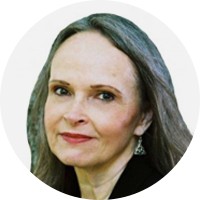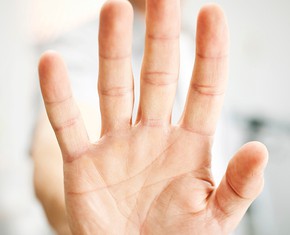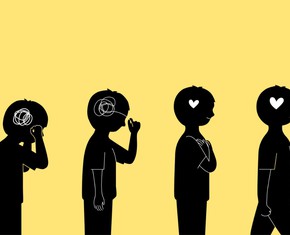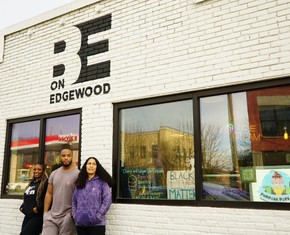The views expressed in our content reflect individual perspectives and do not represent the authoritative views of the Baha'i Faith.
When a member of our neighborhood discussion group posted materials from the high school district’s educational diversity programs my neighbors were sharply divided.
They said “Wasn’t this the critical race theory (CRT) we’d been warned about? Were our children about to be “indoctrinated” into something harmful?”
One neighbor responded with an emphatic “Yes, it is CRT dressed up with a name change. Same curriculum, same agenda.”
The fear of CRT “creeping into our schools,” as one neighbor put it, is not an isolated one. According to Propublica, “Since January 2021, legislatures in more than 40 states have proposed or passed bills and resolutions that would restrict teaching CRT or would limit how teachers can discuss racism and sexism.”
Most of us have heard of critical race theory; many of us have opinions about it; fewer of us know what it is and what it is not. The dictionary defines it as:
A conceptual framework that considers the impact of historical laws and social structures on the present-day perpetuation of racial inequality: first used in legal analyses, and now applied in education, communication studies, and sociology.
RELATED: CRT: Why Should We Teach the History of Race in America?
CRT, as a scholarly discipline, originated at an academic conference held in Madison, Wisconsin, in 1989. The phrase critical race theory was coined by Kimberlé Crenshaw, now a law professor with appointments at Columbia and U.C.L.A. The central question behind CRT: Why has racial inequality persisted into the 20th and 21st centuries, given the impact of the Civil Rights Movement and other forward strides?
Advocates of the discipline pointed to systemic racism as a key obstacle to racial equality – that is, race bias that is built into the systems erected in America, societal pillars such as the judiciary, law enforcement, education, commerce, the economy, etc. Because the discipline arose among academics in the field of jurisprudence, there was a particular emphasis on the way race affected our justice system.
If the American ideal is summed up in the words “with liberty and justice for all,” the relationship between faith and justice is concisely summarized in Baha’u’llah’s statement from The Hidden Words: “The best-beloved of all things in My sight is Justice.” In his final book, Epistle to the Son of the Wolf, he further wrote: “And if thine eyes be turned towards justice, choose thou for thy neighbor that which thou choosest for thyself.”
Baha’u’llah clearly did not define justice narrowly as a system of punishment for crimes. Instead, the Baha’i definition of justice is foundational to our relationship with God and each other, and reiterates Moses’ and Christ’s assertion that the two greatest commandments are to love God and love our fellow human beings as we love our own selves. In that context, it is clear that slavery and racial bias have historically distorted justice in America.
Many, many examples exist, such as the practice of redlining. Redlining involved literally marking certain neighborhoods out on a map as high risk because the inhabitants were mostly Black. The relatively low incidence of Black homeownership today is directly traceable to this practice. Though redlining was made illegal with the Fair Housing Act of 1968, it is still practiced discreetly. Yet, a more deeply ingrained reason housing inequality persists into the 21st century is the lack of upward mobility of families trapped in these neighborhoods. The economic walls are reinforced by a dearth of good schools, job opportunities, and transportation, among other things.
No one factor, or even a handful of factors, creates this fundamental inequity; it is an underlying reality of the system as a whole, and operates independently of the personal beliefs or behaviors of any individual. Systemic racism describes the way the systems and institutions of culture erected in a nation that relied on race-based slavery as a pillar of its economy still bear the imprint of that oppressive past. Despite the fact that this point has been made repeatedly and publicly, there is a strong belief that references to systemic racism mean all Whites are inherently racist.
This, then, is why my neighbors were so alarmed by the Eastside High School District’s diversity program – they believed talk of equity and inclusiveness was just another way of labeling them as “racist.” They interpreted this to mean that their children were being taught to be ashamed of being White because whiteness was somehow “evil.”
The foundations of this erroneous belief were laid by a writer/filmmaker named Christopher Rufo, who had been alerted to the existence of CRT by someone who questioned the content of their employer’s diversity training. In the latter half of 2020, Rufo wrote that, “Strung together, the phrase ‘critical race theory’ connotes hostile, academic, divisive, race-obsessed, poisonous, elitist, anti-American.” Further, he said “Its connotations are all negative to most middle-class Americans, including racial minorities, who see the world as ‘creative’ rather than ‘critical,’ ‘individual’ rather than ‘racial,’ ‘practical’ rather than ‘theoretical.’”
Rufo’s “connotations” are alarming, but they are also entirely his projections — as is his certainty that racial minorities see things as he says. None of those meanings are inherent in the phrase “critical race theory.” Nor are they actually opposed to the terms he places in opposition. The last of these — “anti-American” — arises from Rufo’s feelings that some CRT ideas traced to Marxist critical-theory texts from the 1960s.
Rufo may be right about the professed worldview of some middle-class Americans, but the alternative phrase he obliquely suggests — Creative Individual Practice — is the explicit goal of our high school district’s programs. I accept that they are being honest about those goals because they have a vested interest in adopting creative practices to improve the social culture in which individual students must learn.
If Mr. Rufo had raised his concerns about CRT in the academic culture in which it was formed he might have contributed much to the ongoing dialogue about the healing of racism in America. Instead, he appeared on primetime talk shows where he made a stunning claim: “It’s absolutely astonishing how critical race theory has pervaded every aspect of the federal government.”
This, he warned, was “an existential threat to the United States.” It was being “weaponized against core American values.” He called on the then President to issue an executive order to “stamp out this destructive, divisive, pseudoscientific ideology”. His suggested remedy: halting diversity training of government employees.
Rufo was flown to Washington DC, where he helped to draft the executive order he had called for. As a result, a specialized academic discipline studied in law school for decades became notorious overnight as a perceived threat to our national foundation, our values, and our children’s psyches. People like my neighbors now believed everything from corporate diversity training to a school equity program was Marxist propaganda. They suddenly feared that familiar institutions they’d considered allies in educating their children, are, as one parent put it, “being devoured by an ideology I don’t understand.”
I’d like to circle back to the woman who coined the term critical race theory over 30 years ago. Looking at the incredibly swift and sometimes violent backlash to the mention of race, Kimberlé Crenshaw commented: “It should go without saying that what they are calling critical race theory is a whole range of things, most of which no one would sign on to, and many of the things in it are simply about racism.”
“Reform itself creates its own backlash,” she warns, and cites the murder of George Floyd by a police officer as a catalyzing moment. She sees the furor over anything the public connects to critical race theory as an effort to change the subject or shift the focus of the debate. We should not be focusing on racial inequality, we are told. Our real concern should be the diversity seminars and other programs created to address it.
Our children’s classrooms have become the new front in a war of words over whether we should teach them that this place in which our checkered history has left us makes kindness, respect, and fairness as crucial to their future progress as reading, math, and science. We are challenged to push back against the desire to hide from truths that cause us discomfort, challenged to think of education and race and equality in a new way, challenged to adapt to a new stage in our development. Abdu’l-Baha spoke to that challenge when, in 1912, he traveled the United States promoting Baha’u’llah’s central teaching of human unity:
Humanity has emerged from its former degrees of limitation and preliminary training. Man must now become imbued with new virtues and powers, new moralities, new capacities .…
RELATED: Love: Emanating from the Divine to Purify Our Hearts
The divine message of scripture urges us to meet this challenge by keeping our eyes on the future. The synoptic Gospels — Matthew, Mark, and Luke — all record Christ’s parable of the mustard seed:
To what shall we liken the kingdom of God? Or with what parable shall we picture it? It is like a mustard seed which, when it is sown on the ground, is smaller than all the seeds on earth; but when it is sown, it grows up … and shoots out large branches, so that the birds of the air may nest under its shade.
Abdu’l-Baha, in his writings, reminds us of Christ’s penetrating insight:
Look ye not upon the present, fix your gaze upon the times to come. In the beginning, how small is the seed, yet in the end it is a mighty tree. Look ye not upon the seed, look ye upon the tree, and its blossoms, and its leaves and its fruits. Consider the days of Christ, when none but a small band followed Him; then observe what a mighty tree that seed became, behold ye its fruitage. … Know then the vital import of this tiny seed that the true Husbandman hath, with the hands of His mercy, sown in the ploughed fields of the Lord …
Will we live in the present fearfully, longing for the past, or take the counsel of scripture and live hopefully, building our future? Do we keep our heads down and hope these tribulations pass, or meet the challenge and seize the opportunity they represent? The choice is ours.
You May Also Like
Comments

















Reinventing Racism: Why “White Fragility” Is the Wrong Way to Think About Racial Inequality" by Johnathan Church
Woke Racism by John McWhorter
An Inconvenient Minority: The Attack on Asian American Excellence and the Fight for Meritocracy by Kenny Xu
"Race Marxism" by James Lindsay
There is a website newdiscourses dot com that has a selection under "Groomer Schools", "Translations of the Wokish"
The Woke Reformation - Episodes 1-7 Combined is avaiable on youtube
Watch Immigrant Story Series Week 2: Xi Van Fleet From China on youtube.
There is no dignity in othering people and ranking their "sins" on the intersectionality totem pole. It's Race Marxism. They took Bourgeoise and replaced it with White, Proletariat and replaced it with Black/BIPOC/POC, blame capitalism, and want to destroy all history so they can rewrite it because "the system" is the problem and their socialist utopia is their ...answer - anything they don’t like is labeled "white supremacy".